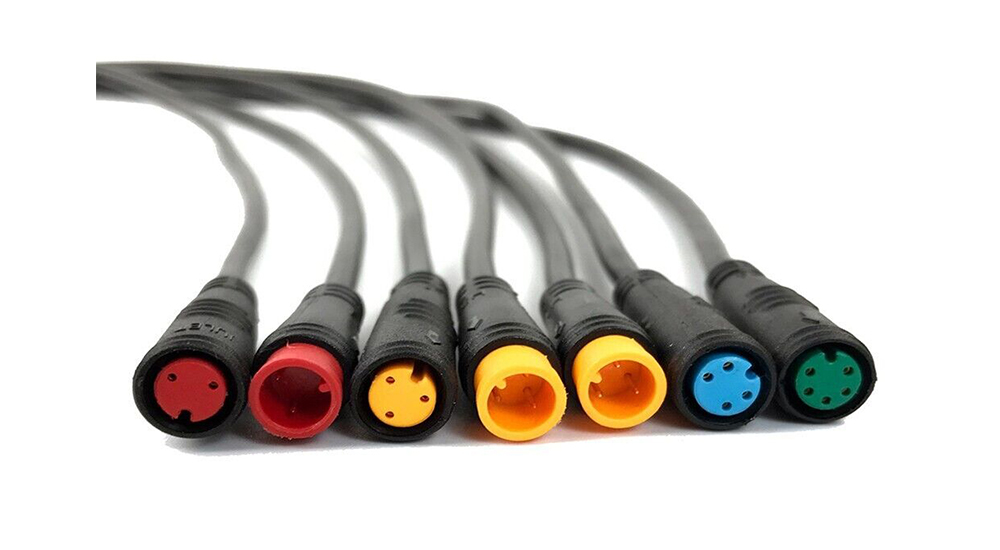What are IP protection levels and why are they important for e-bikes?

Some links may be affiliate links. We may be paid if you purchase something or take an action after clicking one of these options.


There are few things where water and dirt make things better. Mudcake, yes. Mountain bike trails, yes. Coffee machines? Not as much. The same applies to e-bikes; Dust and water are bad news for the electrical components of an electric bike.
In the past, there were two rather loose ratings for protection against moisture, like with a wristwatch: water-repellent and waterproof. Today, these terms have been replaced by a two-number system called an Ingress Protection (or IP) rating.
The IP rating system provides e-bike riders with a better understanding of the level of protection we can count on when riding in conditions other than sunny and dry. As you will see, it is a relatively easy system to understand.
What the IP number system means
The IP rating system uses two numbers to rate the level of protection a product has been tested for. The first number indicates the product’s ability to protect against the ingress of dust and dirt. The second number indicates the degree of protection of the product against moisture.
Protection classes against dust
Here are the reviews for protection from dirt:
0: Does not prevent access or contact with objects.
1: Protects large body surfaces (e.g. hands) from contact. Prevents penetration of solid objects larger than 50mm.
2: Access to dangerous parts is not possible for objects such as fingers or solid objects with a diameter of more than 12.5 mm.
3: Protects against contact with dangerous parts from objects such as tools or thick wires. Prevents access from solid objects larger than 2.5mm.
4:Prevents contact with dangerous parts by objects such as wires, screws, etc. and provides protection from solid objects larger than 1mm.
5: All dangerous parts are protected from contact. Dust protected.
6: All dangerous parts are protected. Dustproof.
When it comes to protection against dust, it is easy to see how the level of protection objectively increases. Something with a dust IP rating of 2 offers four times more protection than something with a rating of 1. And a rating of 3 offers five times more protection than a 2.
Generally, we see a dust rating of 5 for e-bikes. Because to achieve a rating of 6, the product generally needs to be fully sealed. This is not possible with an e-bike motor because the bottom bracket (drive shaft) requires an opening in the motor housing in order to be able to protrude from the housing.
Protection classes against moisture
Moisture protection ratings are quite similar, but offer an increased number of gradations:
0: No protection
1: Protects against vertically falling water drops.
2: Protects against water drops at a 15 degree angle.
3: Protects against water splashes at 60 degree angles.
4: Splashing water from any angle is excluded.
5: Water jets from any angle do not penetrate.
6: Protected against strong jets of water and heavy seas.
7: Will not be affected by temporary immersion in water for 30 minutes at a depth of 1 meter.
8: Will not be affected by temporary submersion in water deeper than 1 meter.
9K: Protects against high pressure during steam cleaning.
Generally, we see an IP rating of 4 or 5 when it comes to moisture protection for an e-bike’s motor and electronics. While a rating of 5 is not common, many Brose motors have a rating of 5. The difference between 4 and 5 isn’t huge, and while an e-bike is rated IP55, it’s not sealed well enough to keep out the direct jet of a pressure washer.
An e-bike with an IP54 rating meets the needs of e-bike riders in all conditions where a reasonable person would be willing to get on an e-bike, and even conditions where an unreasonable person might ride. Whether it’s rain, sand or mud – an e-bike with protection class IP54 should work without any problems.
What does an X mean in an IP rating?
When a company looks at the specs of an e-bike, they will sometimes provide an IPx4 rating. This means that the e-bike’s electrical components have a rating of 4 for moisture protection, but these components have not yet been tested for dirt ingress.
Likewise, we sometimes see the IP rating of e-bikes displayed as a single number, something like this: IP4. This means that they only indicate the level of moisture protection, just like IPx4.
IP protection classes for e-bikes
While e-bike manufacturers have not agreed on an industry-wide water ingress protection standard for e-bikes, the IP54 rating for e-bikes is essentially the de facto industry standard. This provides sufficient protection for an e-bike that is ridden in rainy conditions or on muddy paths.
Our only warning would be if, when looking at an e-bike’s specifications, the manufacturer states the e-bike’s protection rating as IP43 or less. That doesn’t mean a bike shouldn’t be bought (or ridden), but it would be an e-bike that you shouldn’t take with you in wet conditions.
Above all, when a manufacturer lists an e-bike’s IP rating, they show that they pay attention to industry standards and produce accurate reports. That alone is reassuring. A cause for concern would be if a manufacturer does not provide information about ingress protection on its website. What are they hiding?
Ultimately, this is information that can be used to make a purchasing decision, but is probably not a reason to deviate from a purchase for or from a particular e-bike. That said, the best electric bikes usually have a higher IP rating.
Sponsors
Reader interactions
![]()
![]()
